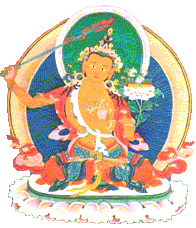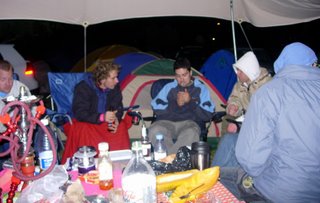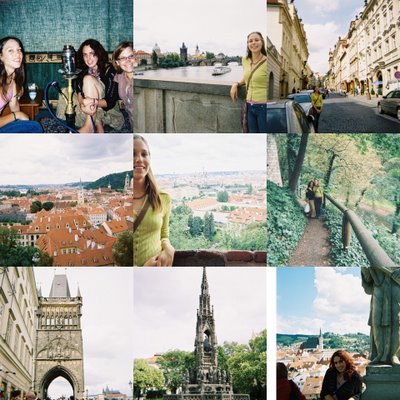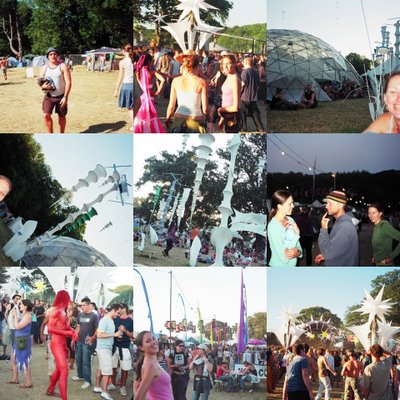I came across this posting on the gumtree website about a BuddhistMeditation Group in Coventry. So I went along last night to see what it was all about, as for a long time I have been interested in a more Eastern philosophical view on life.
Tibetan Buddhism - formerly also called Lamaism, after their religious gurus known as lamas - is the body of religious Buddhist doctrine and institutions characteristic of Tibet and the Himalayan region. It is a multifaceted and integrated teaching, naturally implementing methods for all human-condition levels: Hinayana, Mahayana, Vajrayana (Tantric Path) and Ati Yoga.
The monk that leads us in the mediation class was taught at The Jamyang Centre, which is a centre for meditation and the study of Tibetan Buddhism in the heart of London. Since its establishment in 1978, our main aims are to provide Buddhist teachings to everyone interested, and to develop local community services. Jamyang is the Tibetan name for the Bodhisattva of Wisdom, and the name of our meditation and study centre in the centre of London. Another translation of the word Jamyang (or Manjushri in Sanskrit) is Gentle Voice. For more info, visit http://www.jamyang.co.uk/
Some Buddhism FAQ's
Who is the Buddha? What are the Three Jewels? What is the essence of the Buddha’s teachings? Why are there many Buddhist traditions? What are the various Buddhist traditions? What does the imagery in tantric art mean? What is the purpose of reciting mantras?
Who is the Buddha?
One way is to see the historical Buddha who lived 2,500 years ago as a human being who cleansed his mind of all defilements and developed all his potential. Any being who does likewise is also considered a Buddha, for there are many Buddhas, not just one.
Another way is to understand a particular Buddha or Buddhist deity as omniscient mind manifesting in a certain physical aspect in order to communicate with us.
Yet another way is to see the Buddha -- or any of the enlightened Buddhist deities -- as the appearance of the future Buddha that we will become once we properly and completely have engaged in the path to cleanse our mind of defilements and develop all our potentials.
What are the Three Jewels?
The Dharma embodies the preventive measures which keep us from problems and suffering. This includes the teachings of the Buddha, as well as the realizations of those teachings the cessations of problems and their causes, and the realizations or paths which lead to those cessations.
The Sangha are those beings who have direct non-conceptual perception of emptiness or ultimate truth. On a relative level, Sangha also refers to the ordained people who put the Buddha’s teachings into practice.
The Dharma is our real refuge, the medicine we take which cures our problems and their causes. The Buddha is like the doctor, who correctly diagnoses the cause of our problems and prescribes the appropriate medicine. By assisting us in the practice, the Sangha is similar to the nurse who helps us take the medicine.
Taking refuge means that we rely wholeheartedly on the Three Jewels to inspire and guide us towards a constructive and beneficial direction to take in our life. Taking refuge does not mean passively hiding under the protection of Buddha, Dharma and Sangha. Rather, it is an active process of taking the direction they show and improving the quality of our life.
What is the essence of the Buddha’s teachings?
Simply speaking, this is to avoid harming others and to help them as much as possible. Another way of expressing this is, Abandon negative action; create perfect virtue; subdue your own mind. This is the teaching of the Buddha. By abandoning negative actions (killing, etc.) and destructive motivations (anger, attachment, close-mindedness, etc.), we stop harming ourselves and others. By creating perfect virtue, we develop beneficial attitudes, like impartial love and compassion, and do actions motivated by these thoughts. By subduing our mind, we cut away all false projections, thus making ourselves calm and peaceful by understanding reality.
The essence of Buddha’s teachings is also contained in the three principles of the path: definite emergence, the dedicated heart and wisdom realizing emptiness. Initially, we seek definitely to emerge from the confusion of our problems and their causes. Then, we see that other people also have problems, and with love and compassion, we dedicate our heart to becoming a Buddha so that we are capable of helping others extensively. In order to do this, we develop the wisdom understanding the real nature of ourselves and other phenomena.
With skill and compassion in guiding others, the Buddha turned the wheel of Dharma three times, each time setting forth a slightly different philosophical system in order to suit the various dispositions of sentient beings. The essence of all the teachings is the same: the wish definitely to emerge from the cycle of constantly recurring problems (samsara), compassion for others and the wisdom realizing selflessness.
Not everyone likes the same kind of food. When a huge buffet is spread before us, we choose the dishes that we like. There is no obligation to like everything. Although we may have a taste for sweets, that does not mean that the salty dishes are not good and should be thrown away!
Similarly, we may prefer a certain approach to the teachings: Theravada, Pure Land, Zen, Vajrayana, and so on. We are free to choose the approach that suits us best and with which we feel the most comfortable. Yet we still maintain an open mind and respect for other traditions. As our mind develops, we may come to understand elements in other traditions that we failed to comprehend previously.
In short, whatever is useful and helps us live a better life, we practice, and whatever we do not yet understand, we leave aside without rejecting it.
While we may find one particular tradition best suited for our personality, do not identify with it in a concrete way: "I am a Mahayanist, you are a Theravadin," or "I am a Buddhist, you are a Christian." It is important to remember that we are all human beings seeking happiness and wanting to realize the truth, and we each must find a method suitable for our disposition.
However, keeping an open mind to different approaches does not mean to mix everything together at random, making our practice like chop suey.
Do not mix meditation techniques from different traditions together in one meditation session. In one session, it is better to do one technique. If we take a little of this technique and a little from that, and without understanding either one very well mix them together, we may end up confused. However, a teaching emphasized in one tradition may enrich our understanding and practice of another. Also, it is advisable to do the same meditations daily. If we do breathing meditation one day, chanting the Buddha's name the next, and analytical meditation the third, we will not make progress in any of them for there is no continuity in the practice.
What are the various Buddhist traditions?
The Theravada lineage (Tradition of the Elders), which relies on sutras recorded in the Pali language, spread from India to Sri Lanka, Thailand, Burma, etc. It emphasizes meditation on the breath to develop concentration and meditation on mindfulness of the body, feelings, mind and phenomena in order to develop wisdom.
The Mahayana (Great Vehicle) tradition, based on the scriptures recorded in Sanskrit, spread to China, Tibet, Japan, Korea, Vietnam, etc. Although in the Theravadin practice love and compassion are essential and important factors, in the Mahayana they are emphasized to an even greater extent.
What is the purpose of reciting mantras?
Other links:
http://www.buddhistthought.org/
http://www.lamayeshe.com/
http://www.fpmt.org
http://aboutbuddhism.org/
http://simple.wikipedia.org/wiki/Buddhism
http://www.bbc.co.uk/religion/religions/buddhism/
Orangeblossom xxx



































